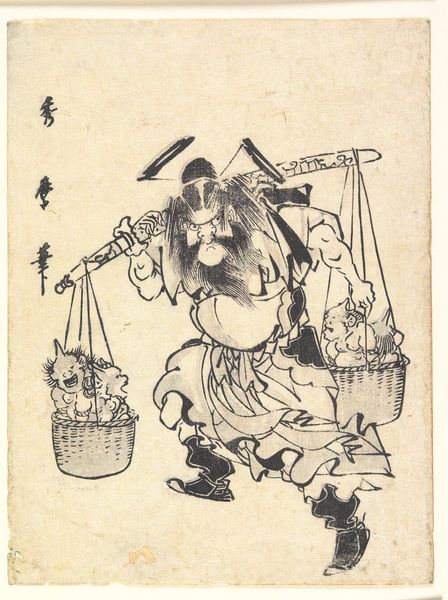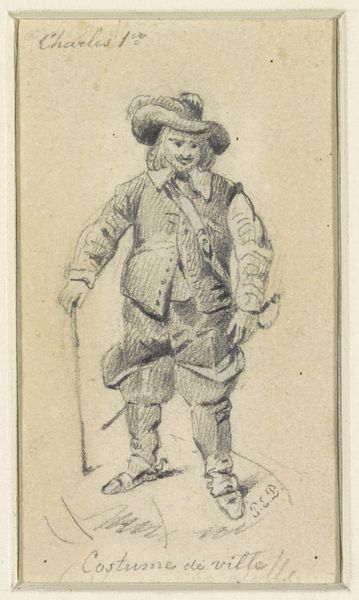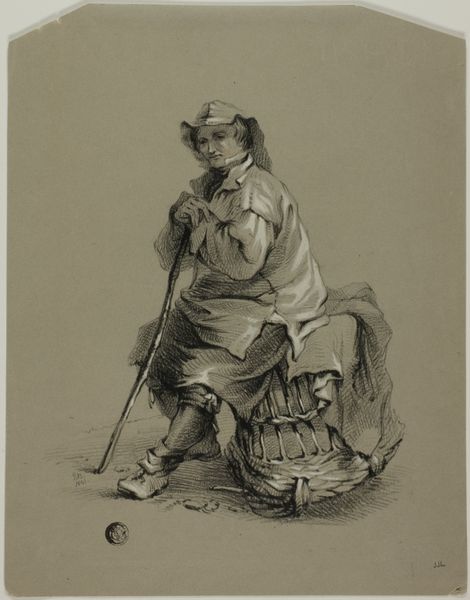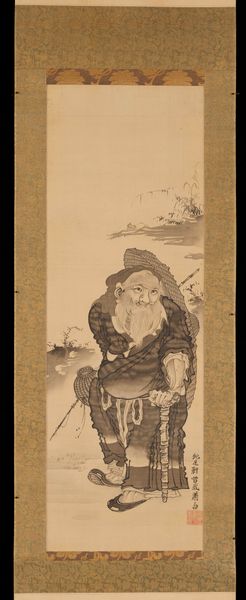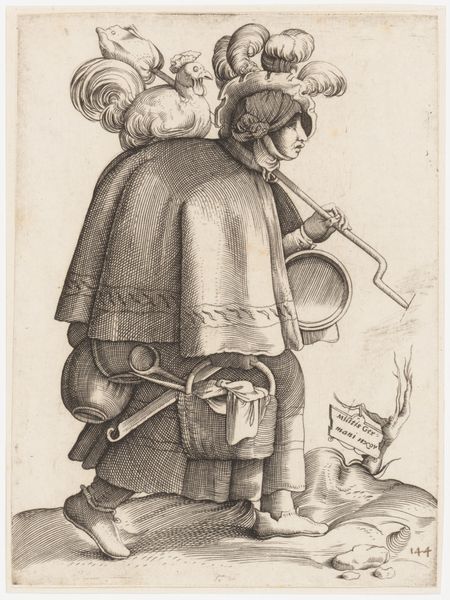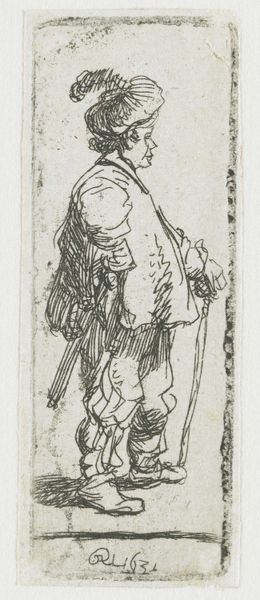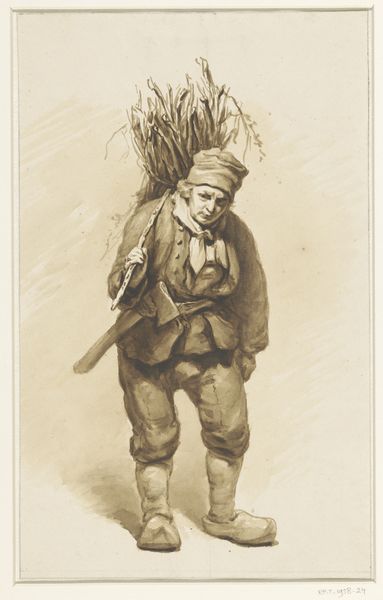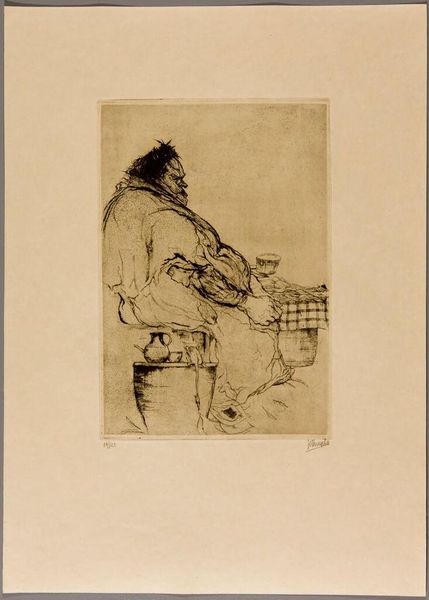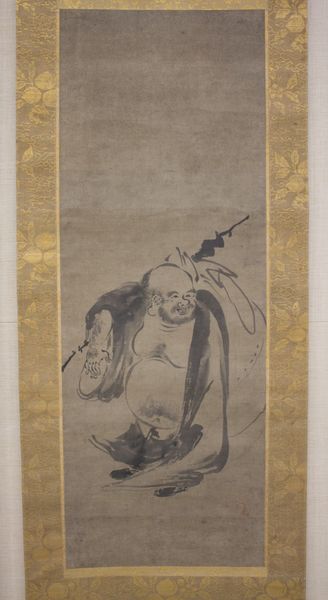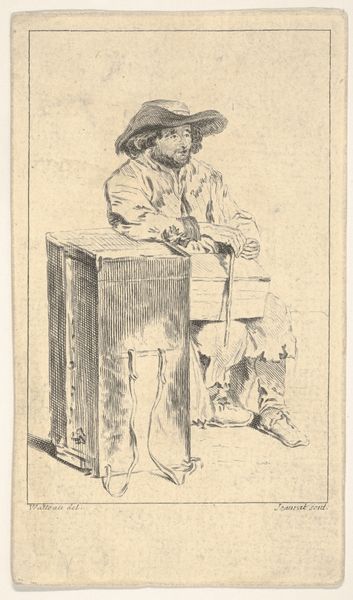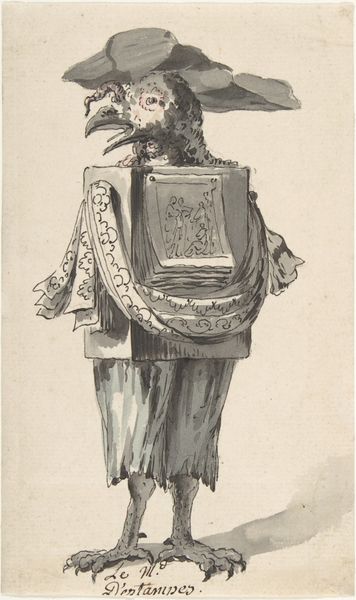
ceramic, earthenware, sculpture
#
portrait
#
ceramic
#
figuration
#
earthenware
#
stoneware
#
sculpture
#
naïve-art
#
ceramic
#
decorative-art
Dimensions: H.: 23.1 cm (9 1/8 in.)
Copyright: Public Domain
Editor: So this object is a ceramic bottle from about 1830. It looks like an anonymous piece, currently residing at the Art Institute of Chicago. The figure and overall execution are a bit...folksy? I’m curious, what catches your eye when you look at it? Curator: I'm immediately drawn to the bottle's materiality. Earthenware like this, produced in the 1830s, speaks to the industrial developments impacting craft. This wasn’t high art; it was molded, possibly slip-cast—methods developed to make production faster, reaching a wider audience for utilitarian, though perhaps "decorative," goods. Notice the inscription, "I strike the Mormon Proper"—what's that communicating? Editor: Hmm, perhaps it was mass produced as some sort of propaganda against the Mormons? Or, paradoxically, maybe it was marketed to them directly, thus 'striking' a business deal? I am really intrigued by that inscription! Curator: Exactly! The inscription, combined with the somewhat caricature-ish figure, tells us about the social context in which it was created and circulated. The object isn’t just a container, it's a commentary. What materials, processes, and who they employed is vital to interpretation, revealing social hierarchies, tensions and beliefs. Editor: That's a very different way to see it compared to how I normally would— I generally just think of aesthetics. Curator: Aesthetics, too, reflect materials, labor, and process. It prompts: Who made it? Why this form? How did consumption interact with burgeoning Mormonism? Editor: This definitely gives me a new appreciation for what appears to be an unassuming, even rudimentary object. Considering production and its place in the market, the narrative deepens considerably. Curator: Indeed. It pushes us to ask, how can we move beyond mere appreciation and understand how these artifacts acted within broader networks of material culture?
Comments
No comments
Be the first to comment and join the conversation on the ultimate creative platform.

